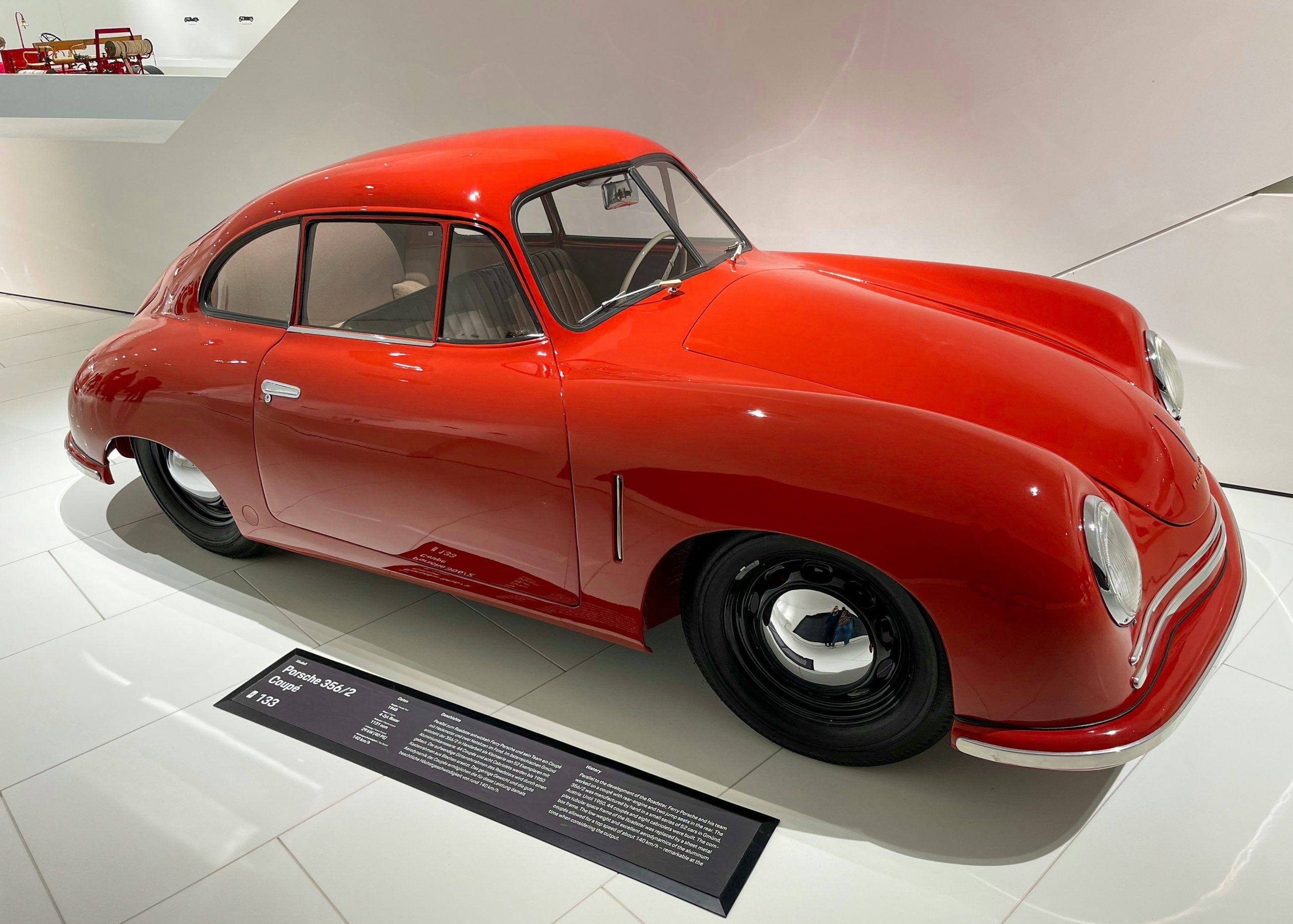1948 Porsche 356
The Porsche 356 emerged during a transformative period in post-World War II Europe, when the automotive industry faced significant challenges but also opportunities for innovation. Designed under the leadership of Ferry Porsche, the 356 was born from the ingenuity of Ferdinand Porsche, whose engineering expertise had already left an indelible mark on automotive history with projects like the Volkswagen Beetle.


Ferry Porsche’s vision for the 356 was ambitious yet pragmatic. He aimed to create a sports car that embodied Porsche’s engineering philosophy: lightweight, agile, and reliable. The early prototype, known as the 356/1, featured an innovative mid-engine layout and an aluminum body, demonstrating Porsche’s commitment to pushing the boundaries of automotive design. This experimental configuration highlighted Porsche’s determination to maximize performance through advanced engineering principles.
The transition to production with the 356/2 in 1948 marked a pivotal moment for Porsche. Influenced by the practicality of the rear-engine layout pioneered by the Volkswagen Beetle, the 356/2 adopted this configuration while retaining many of the design elements tested in the prototype. Powered initially by a modest 1.1-liter flat-four engine producing 40 horsepower, the 356/2 prioritized nimble handling and responsive driving dynamics over raw horsepower. This approach not only aligned with Porsche’s ethos of efficient performance but also appealed to a burgeoning market of enthusiasts seeking accessible yet exhilarating driving experiences.



The design of the Porsche 356 epitomized post-war European aesthetics with its sleek, aerodynamic lines and understated elegance. Evolving from its early days of handcrafted aluminum bodies in Gmünd to more mass-produced steel bodies in Stuttgart, the 356 maintained its distinctive silhouette and minimalist appeal. The rounded contours, low-slung profile, and signature sloping roofline not only enhanced the car’s visual appeal but also contributed to its aerodynamic efficiency—a crucial factor in achieving both speed and stability on the road and racetrack.
Central to the Porsche 356’s enduring legacy was its continuous evolution in performance and engineering. Over its production run, engine capacities expanded progressively from 1.1 liters to 2.0 liters, with corresponding increases in horsepower and torque. These enhancements were complemented by advancements in suspension technology, braking systems, and chassis dynamics, all aimed at refining the driving experience while maintaining the car’s legendary handling characteristics.


The Porsche 356’s success in motorsport further solidified its reputation as a formidable competitor. Notable victories in prestigious races such as the 24 Hours of Le Mans, the Targa Florio, and the Carrera Panamericana showcased the car’s durability, reliability, and outright speed. These achievements not only underscored the 356’s capabilities on the track but also reinforced Porsche’s commitment to engineering excellence and performance-oriented design.
Beyond its racing pedigree, the Porsche 356 left an indelible mark on automotive history by laying the foundation for future Porsche models, most notably the iconic Porsche 911. Building upon the 356’s rear-engine layout and timeless design principles, the 911 would go on to redefine the sports car segment and become a symbol of automotive innovation and driving pleasure.
In conclusion, the Porsche 356 remains a milestone in Porsche’s storied history, embodying the brand’s dedication to craftsmanship, performance, and engineering excellence. Its enduring appeal among enthusiasts and collectors underscores its status as a timeless icon of automotive design and a testament to the visionary spirit of Ferdinand and Ferry Porsche.